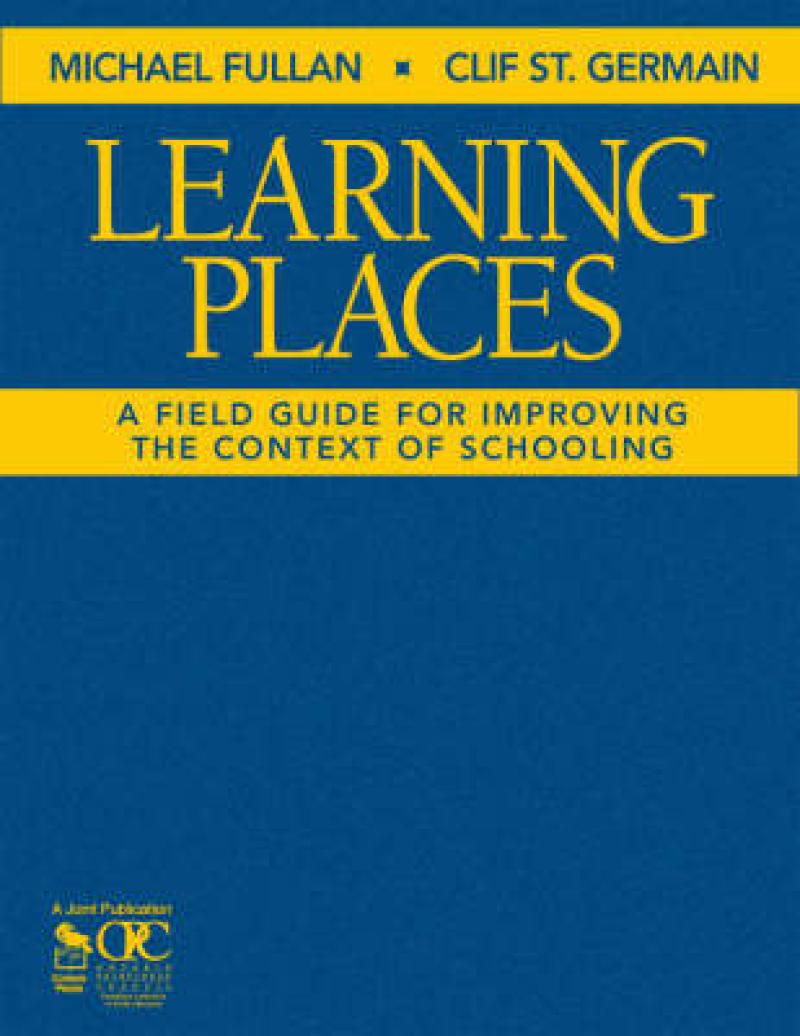'This timely book is exactly what modern schools need, blending Fullan's theoretical genius about change with practical strategies that can work in any school. Readers will discover that it is practical, easy to use, and empowering for educators, with lots of room for personal choices at the school level' - Lyn Sharratt, Superintendent of Curriculum and Instructional Services, York Region District School Board, North Toronto, ON, Canada
'This book is an easy read and provides a well developed idea of framing the school context for student achievement. The author provides excellent resources, worksheets, templates, walk-through and reflection ideas, and additional support materials' - Rosemarie Young, Past President, National Association of Elementary School Principals, USA
Need an inspiring approach to school change? Need staying power for school improvement initiatives? Organized to make learning contagious throughout the school, this user-friendly guide helps create a culture of learning that promotes the simultaneous development of students, teachers, and parents - addressing specific ways to maximize study groups, student data, classroom walk-throughs, and more. The interactive self-assessment procedures focus on:
o achieving a sense of purpose
o facilitating program coherence
o invigorating classroom teaching
o supporting the professional development of teachers
o developing wider circles of leadership
Issuing a call to action for all educational communities, this easy-to-use manual offers a visionary yet grounded approach to revitalize educators and reenergize their efforts for meaningful, lasting reform.
Les mer
This user-friendly guide provides interactive self-assessment protocols for promoting a sense of purpose, achieving program coherence, invigorating classroom teaching, and supporting the professional development of teachers.
Les mer
Author to Reader
Preface
Acknowledgements
About the Authors
Section A: Shaping Schoolwide Contexts
1. Building on Strengths
2. Achieving Momentum Through Innovativeness
3. Linking Standardized Test Data to Teaching and Learning
4. Promoting Purpose and Community
5. Making Learning Support Accessible
Section B: Improving Classroom Teaching
6. Sharing Ideas About Improving Classroom Teaching
7. Focusing Student Interest and Attention
8. Engaging Student Thinking
9. Supporting Student Performance
10. Affirming Student Understanding
Section C: Sustaining Passion and Commitment
11. Supporting Professional Development
12. Reframing Success
Index
Les mer
"This book is an easy read and provides a well developed idea of framing the school context for student achievement. The author provides excellent resources, worksheets, templates, walk-through and reflection ideas, and additional support materials." -- Rosemarie Young, Past President"It is necessary to keep our eyes on the real work of improving our schools and not be sidetracked into jumping through hoops that are in the end not meaningful. This book provides the reader with that opportunity." -- Nic Cooper, Principal"The book is a very easy read-good for busy practitioners. No matter where you are in the process, you can jump in and use the tools." -- Teri White, Principal"Learning Places will help all of us transform schools and their classrooms into cultures hospitable to human learning. I wish I had had this field guide during my own turbulent years as a school principal." -- Roland S. Barth, Author, Lessons Learned"This timely book is exactly what modern schools need, blending Fullan's theoretical genius about change with practical strategies that can work in any school. Readers will discover that it is practical, easy to use, and empowering for educators, with lots of room for personal choices at the school level." -- Lyn Sharratt, Superintendent of Curriculum and Instructional Services"Simply and beautifully weds theory and practice! This book should be on all administrators' desks as they go about the critical task of education for young people today. Brings forth the finest in theory and the best in practice and at the same time affirms the values that our society was built on and through which it will thrive." -- Brother Jeffrey L. Calligan, Auxiliary Provincial and Director of Education"Presents staff, students, administrators and parents with a road map to a 'grand vision,' and invites us to join the highest of all human enterprises-the creating of a better world, starting with our schools. Provides every school staff the opportunity and tools to create a school engendering and affirming that deepest and most pervasive human drive, the drive to learn." -- Lucianne B. Carmichael, Principal, McDonogh 15 School, New Orleans, LA"Presents a workbook-style blend of information about assessment, the change process, differentiated instruction, and other pedagogical approaches with strategies encouraging reflection, conversation, and research among groups of educators. The book is filled with inspirational quotes, thoughtful questions, and challenging directives to further encourage reader reflection." -- PsycCRITIQUES, August 2007, Vol. 52(33)
Les mer
Produktdetaljer
ISBN
9781412942324
Publisert
2006-09-12
Utgiver
Vendor
SAGE Publications Inc
Vekt
310 gr
Høyde
279 mm
Bredde
215 mm
Aldersnivå
06, P
Språk
Product language
Engelsk
Format
Product format
Innbundet
Antall sider
224
